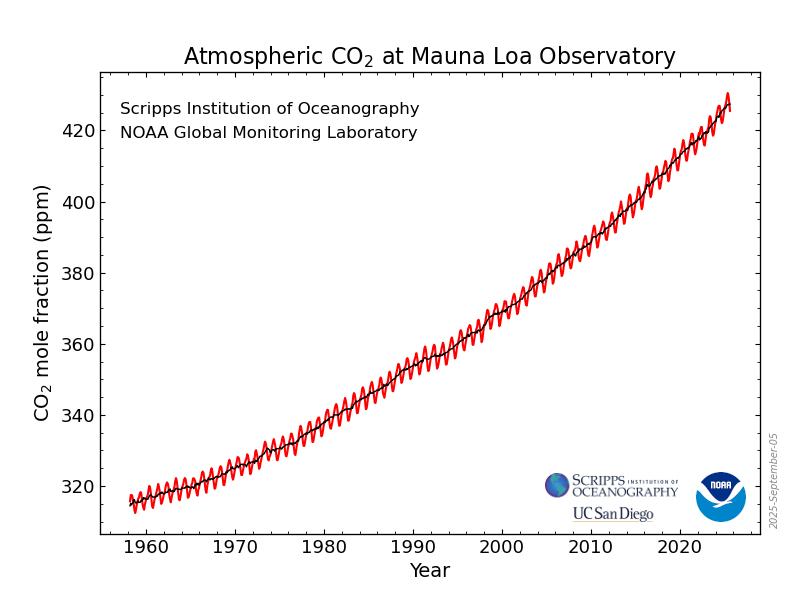Bill Gates admits rising CO2 isn’t going to kill us
If Bill Gates has seen the light, it’s inevitable others will follow
It has come as a shock to the alarmist community and the renewable energy sector that Bill Gates has just announced that Climate Change is not an existential crisis in his article Three tough truths about climate change. Apparently, richer nations can invest in adaptation, but the poorest ones may suffer if they cannot raise their economic prospects. Who knew?
Well, the answer is many of us knew and have been saying this for years. The surest way to tackle the impact of a changing climate is to invest in a range of resilience measures, and that takes money. Well-off countries will be able to do this for a fraction of the cost of trying to lower CO2 emissions. Poorer countries will struggle unless they can move themselves up the prosperity ladder.
The question is how they are going to achieve this if global organisations like the World Bank insist that they follow a Net Zero path to prosperity, an approach that we know is destined to fail. Rich countries in the west only achieved their prosperity through a long-term investment in progress through abundant and cheap energy. To think that progress can be achieved without this is fantasy economics.
Why can we be so certain? Well - just look at what is happening in the west now. Our industrial base is on its knees with steel, aluminium, chemicals and ceramics being wiped out. Automobile production is also suffering with the enforced switch to EVs that ordinary people are doing their best not to comply with. Even the once might German auto makers are now struggling. In the UK growth has been anaemic/non-existent for years. Wages in real terms have been falling for years. If you disagree with my take, feel free to argue in the comments below.
And what has this cost? Estimates vary widely but a quick study of the main data sources, such as the International Energy Agency and the IPCC suggests that the likely “investment” in preventing climate change is in the region of $14T between 1980 and 2023! That’s right - $14,000,000,000,000.
And the result? Beyond the obvious economic devastation, CO2 has continued to rise inexorably, as this graph from the Global Monitoring Laboratory shows:
Surely then, even if you are convinced the world is going to end, we cannot carry on doing the same thing as it clearly isn’t working. What could $14T have achieved if it had been invested wisely over the same timescale? If you mind doesn’t boggle at the possibilities, then I just don’t understand how you look at the world.
I am convinced more than ever that the climate consensus is falling apart, as I wrote in my articles Is this the end of climate groupthink? and Is the UK’s Net Zero Drive ‘Economic Suicide’? If one of the richest men on the planet has seen the light, it can’t be long before everyone else of influence comes round to his view. There is only so much denial of basic economics and physics that can be swallowed. As a result of more and more people objecting to ever rising energy prices, driven predominantly by Net Zero policy costs, the political landscape is shifting dramatically.
How long can the Labour government ignore this shift? It seems from Ed Miliband’s latest wheeze, to impose another £100 tax on gas boilers, that he isn’t ready yet to give into reality. I find this staggering, almost beyond comprehension. As someone who was once genuinely scared about the impact of man-made climate change, I found it easy to adjust my views once I had done my own basic research, starting twenty-five years ago. Finding out the world is not doomed is incredibly good news. So why don’t more people want to at least reassess their own worries? Surely, even the vaguest possibility is worth a little consideration?
It may be apocryphal but John Maynard Keynes is thought to have said:
When the facts change, I change my mind. What do you do, sir?
Over to you Ed…




Due to the combination of wind droughts and the cost of grid-scale storage there will never be a transition to wind and solar with existing technology. We should have learned something from the progress so far!
Trillions of dollars spent worldwide on wind and solar have delivered more expensive and less reliable power with severe environmental impacts.
The elephant in the room is the impact of severe wind droughts or dunkelflautes over continental areas, documented by Paul Miskelly and Anton Lang in Australia over a decade ago.
https://rafechampion.substack.com/p/the-late-discovery-of-wind-droughts
Dirt farmers are alert to the threat of rain droughts, but the wind farmers never checked the reliability of the wind supply.
Wind droughts become an existential threat to thousands or tens of thousands of people when the wind drought trap closes on a windless night during extreme weather conditions. See Texas in February 2021! Fluctuations in solar and wind input pose the same threat in the daytime where grids lack inertia, see the pain in Spain, 2025.
https://rafechampion.substack.com/p/defusing-the-wind-drought-trap
There is also the problem that wind and solar are parasites, living on more efficient sources of power.
https://rafechampion.substack.com/p/wind-and-solar-the-energy-thieves-a0c